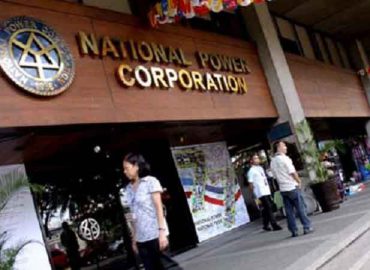.
By Claudeth Mocon-Ciriaco, October 11 2018; Business Mirror
https://businessmirror.com.ph/easing-traffic-can-be-done-promise/
Image Credit to Business Mirror
WILL traffic jams—which force millions of Filipinos to stay on the road for many precious hours, and drain the economy of billions of pesos daily—be a thing of the past in the metropolis in the coming years?
Yes. According to a former official of the Metropolitan Manila Development Authority (MMDA) who looked into the future and saw a silver lining, no matter that most of us still wake up each day with dread at the thought of how we will survive yet another day in the urban jungle. He believes that with the “improved skills” of the agency, the perennial problem of traffic and flooding will, in time, no longer bother Metro Manilans.
“Generally, MMDA had innovated using ICT technologies [that are] available and applicable. Applications to traffic management, flood mitigation and public safety. Continuing upgrade of equipment for many applications across all MMDA services. Risk management approach has also advanced by the uptake of science-based information and processes,” Mon Santiago, former director for special operations, shared in an interview with the BusinessMirror. Santiago has retired from the MMDA but still continues to serve the agency as a consultant and heads the Metro Manila Crisis Monitoring and Management Center.
He noted that today, there is an extensive collaboration with other government and nongovernment partners like the private sector and volunteers, unlike the time when he first joined the then Metropolitan Manila Commission in December 1979 as a special operations officer and became a director 10 years after.
“The use of social-media platforms for sharing and obtaining information is also a big help in putting solutions to traffic problems,” he observed.
He is hoping that the MMDA will continue to move toward adopting international standards or conform with international practices.
Meanwhile, MMDA General Manager Jojo Garcia expressed hope that Metro Manila will become a traffic-free metropolis. With the infrastructure projects of the Department of Public Works and Highways (DPWH) and the Department of Transportation’s (DOTr) improvement of mass transportation, resolving much of the current traffic woes can be done under the “Build, Build, Build” program of the Duterte administration.
As a matter of fact, the recent International Organization for Standardization (ISO) 9001:2015 certification chalked up by MMDA is proof, he said, that the agency is “on the right track” when it comes to quality management systems.
Garcia said the certification validates the agency’s commitment to efficient public service, under Lim’s leadership.
“We always want the process to be transparent, ensuring that standardized processes are consistently followed,” said Garcia.
The ISO 9001:2015 is the latest version of the ISO 9001 standard which is widely known and internationally accepted for quality management, and acknowledges organizations that are able to provide effective customer and regulatory services.
Chairman Lim: ISO was a fond dream
For his part, MMDA Chairman Danilo Lim said that having the ISO certificate has been a dream since he took over as chairman in May 2017.
“Today is the realization of that dream after more than a year in office,” Lim added. This is the first time for the MMDA to be ISO-certified in a full scope.
In the coming years, Lim said he dreams that the agency will be able to build a new office.
“This building is not ours. I want us to have a place of our own, and with our continued efforts we can look forward to a ground-breaking ceremony soon,” said Lim.
AJA Registrars is an independent third-party registrar (certification body) operating from a global network of offices providing third-party registration and training services at a local level.
Infra and mass transport
Garcia said that MMDA is closely coordinating with different government agencies like DPWH and DOTr in seeking solutions to the problems faced by the highly congested metropolis.
“If DPWH will finish soon [the major infra projects] and with the ongoing improvement of mass transportation like Metro Rail Transit, Light Rail Transit and even the planned subway, I think we can do more and help ease the lives of our [commuting] people here in Metro Manila,” he added.
Garcia was referring to the drastic improvements that champions of the “Build, Build, Build” program say will soon be made in the flow of traffic in the metropolis.
Among these projects are the North Luzon Expressway-South Luzon Expressway connector, and the Skyway Stage 3 projects, which will be done by 2020.
Also, the Laguna Lake Highway and the Harbor Link Segment 10, which connects MacArthur Highway in Valenzuela City and C-3 in Caloocan City, will be completed this year.
These projects are on top of the C-6, bypass roads for Edsa, and the construction of 12 bridges across the Pasig River.
“In the next few years, through the leadership of Chairman Lim and the ISO certificate, I know we we are on the right track. We can have a long-term solution, but it will take more years; that is why we need a band-aid solution. But we don’t want these short-term solutions like odd-even scheme [to] be our disability. We need to think of a long-term solution. Because the public will just continue to suffer. Those who can afford will just buy another car to avoid the scheme. That is why we are promoting car pooling,” Garcia said.
Garcia revealed that they are also taking their traffic expertise outside the metropolis to other key cities in the provinces.
“What we are doing right now, [we] inspire people to do the right thing. We impose discipline,” Garcia said, adding that at the end of the day, discipline is still the most important thing that should be observed in an urban area.
Now that—dealing with human nature—could be even tougher, in the future he sees quite optimistically, than laying down big bridges and connecting mega-highways.

